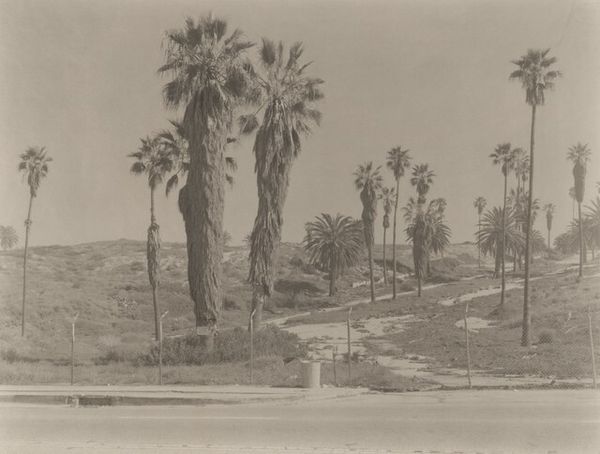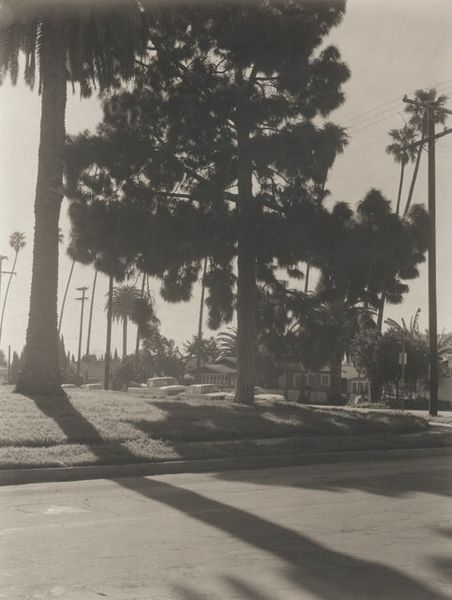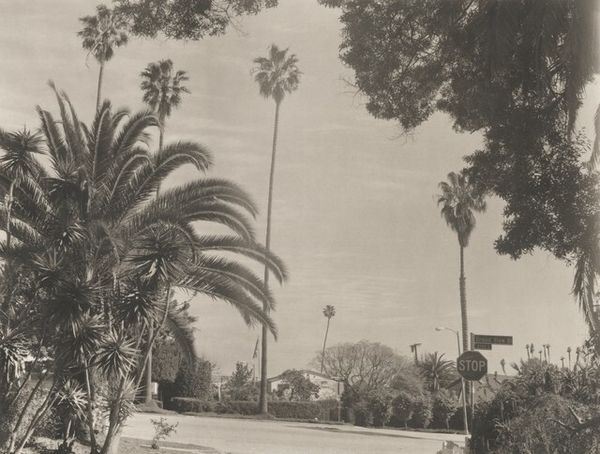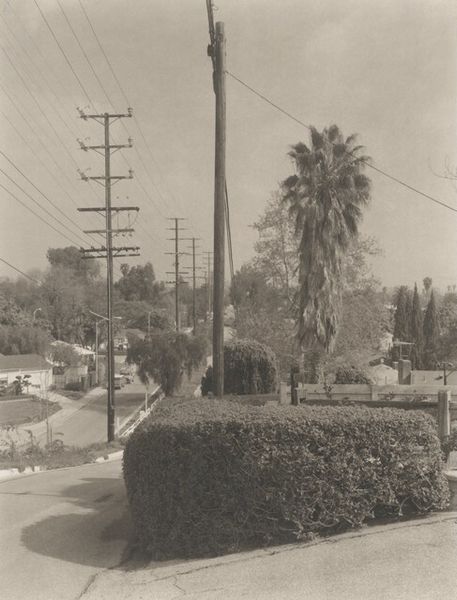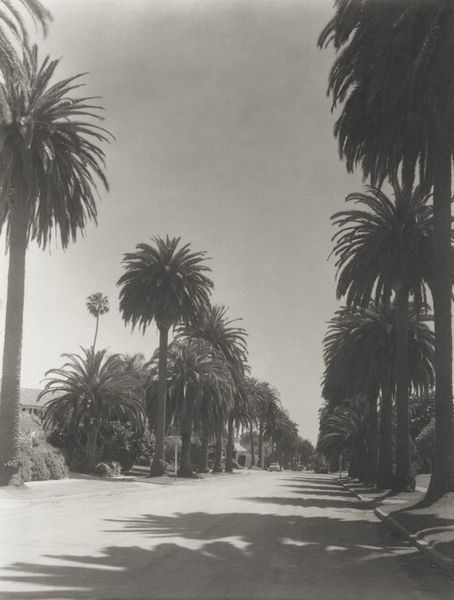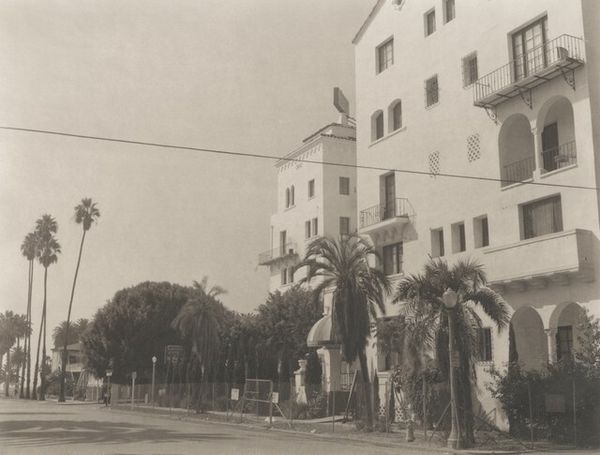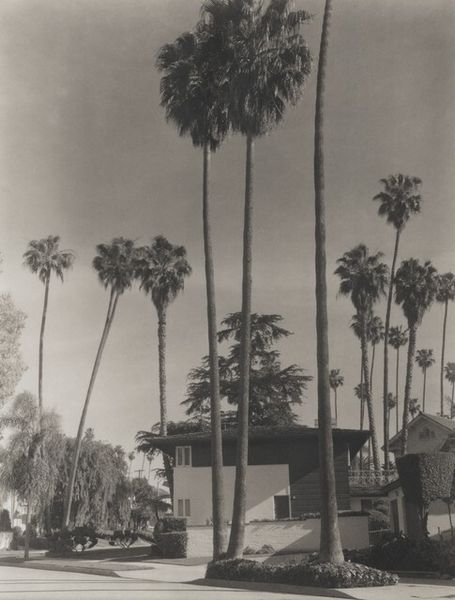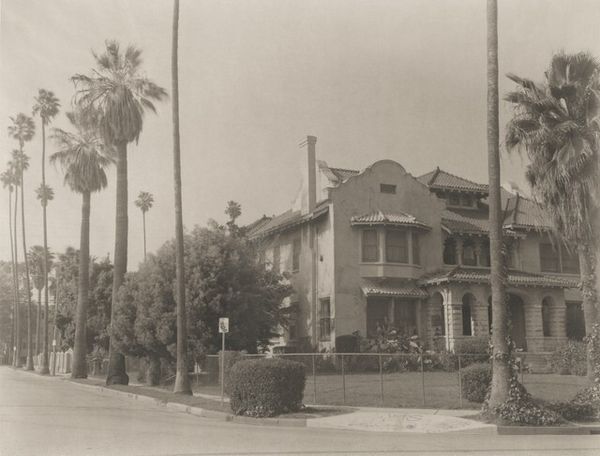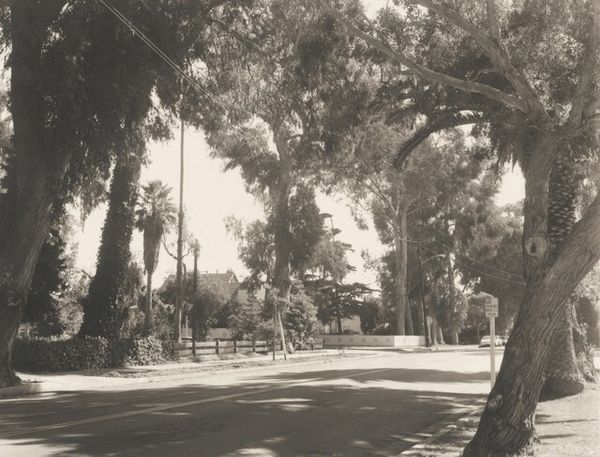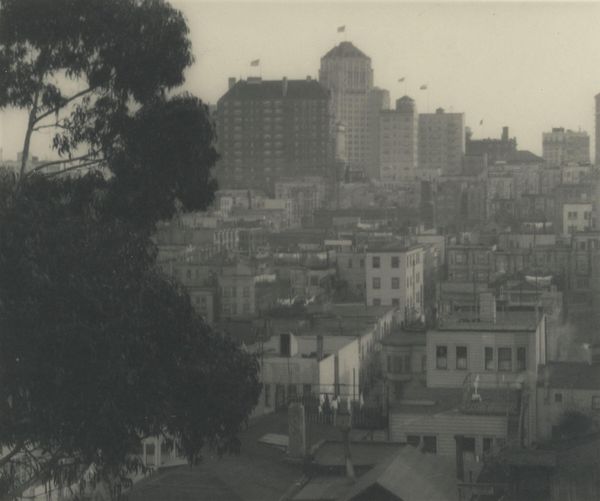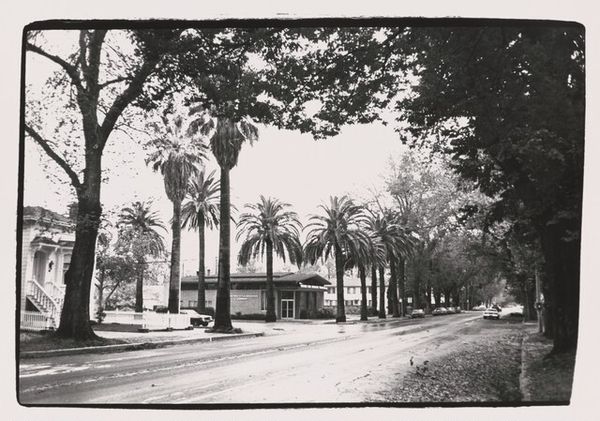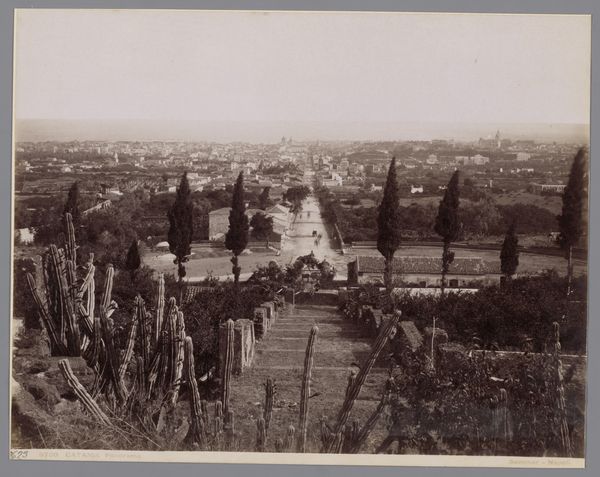
photography, gelatin-silver-print
#
black and white photography
#
landscape
#
street-photography
#
photography
#
gelatin-silver-print
#
monochrome photography
#
cityscape
#
monochrome
#
modernism
#
realism
#
monochrome
Dimensions: image: 25.9 × 34.1 cm (10 3/16 × 13 7/16 in.) sheet: 35 × 42.4 cm (13 3/4 × 16 11/16 in.)
Copyright: National Gallery of Art: CC0 1.0
Curator: Looking at this monochrome photograph titled "Micheltorena Street, Silver Lake", purportedly taken sometime between 1994 and 1995 by Madoka Takagi, my immediate feeling is of intense stillness. There’s something very calm about the light and shadow play, and the long shadows indicate either early morning or late afternoon. Editor: It’s compelling how Takagi presents us with a gelatin-silver print like this, because it emphasizes not just what is captured, but how. Silver Lake, especially in the mid-90s, was undergoing considerable demographic and economic shifts. This photographic process roots the image firmly in the materiality of a specific era and, potentially, social landscape. The artist’s labor and choices involved with such antiquated media make me wonder if this was a reflection of broader social commentary. Curator: Interesting. To me, the repetitive form of telephone poles versus the palm trees establishes a man-made-versus-nature dichotomy in a very familiar setting. The lines, the gradients… they’re beautiful in a strictly visual sense. This image doesn't feel staged; there is realism at play. Editor: But realism is never neutral. The choice to depict this particular street, its architecture, even the presence—or lack thereof—of people, reflects choices about what stories are valued. Consider the implications of showcasing a neighborhood undergoing gentrification; Who lives here? Who might be displaced? Black and white images can make social issues seem somehow distant but let’s not let it! It's the job of photography and photographers to highlight injustice or social change. Curator: True, a contemporary eye brings much to this photo! From my perspective, the tangible process itself is of great value. Takagi selected each aspect of the scene, crafted and worked with chemicals... It all culminates in this distinct object of art. The print *itself* becomes an artifact in that time and process. Editor: Agreed. Appreciating the labor helps reveal power structures embedded in artistic practices and within representations of cityscapes. This artwork encapsulates both its physical construction and deeper cultural context. I’ll remember this vision the next time I stroll in LA!
Comments
No comments
Be the first to comment and join the conversation on the ultimate creative platform.
